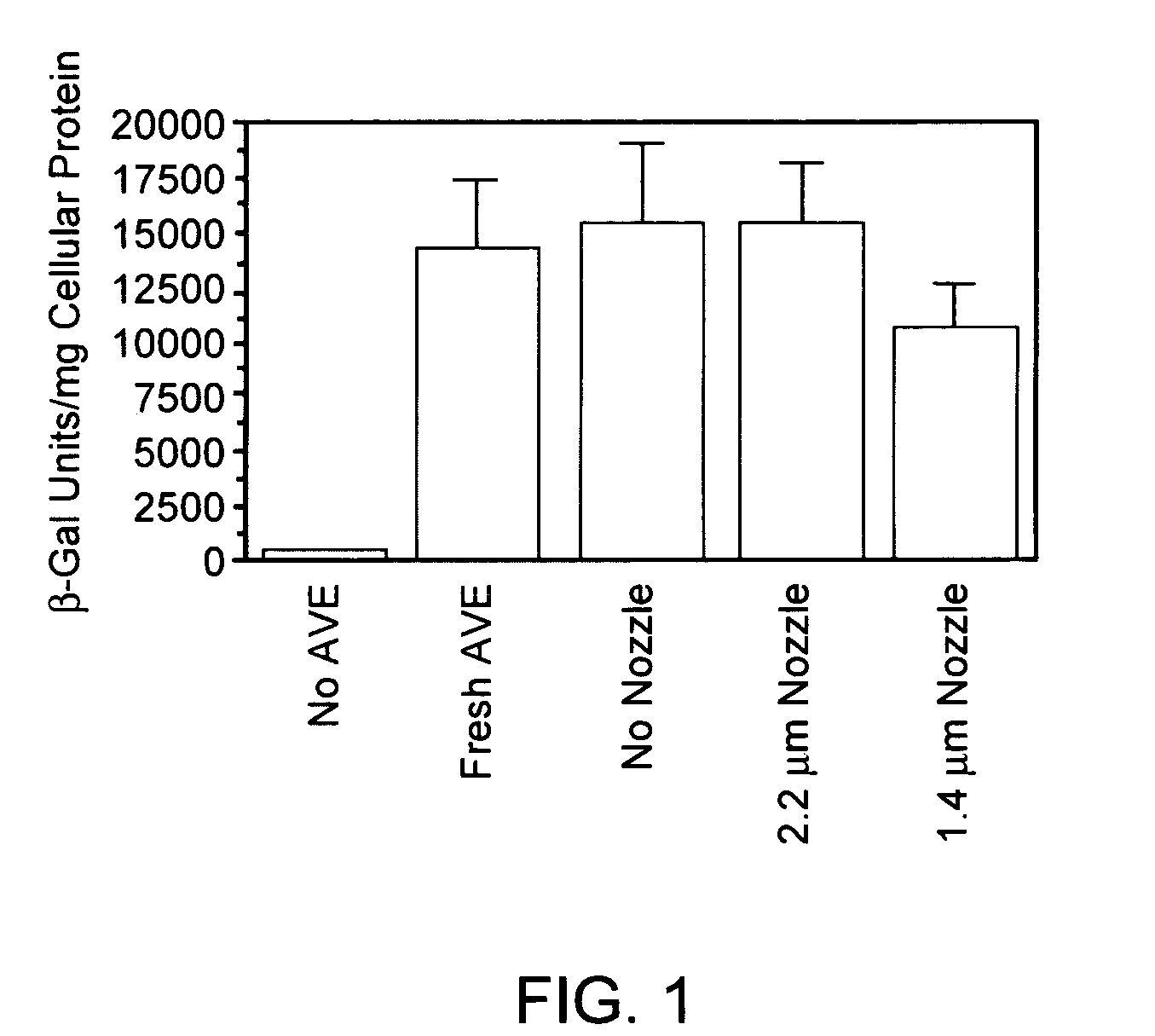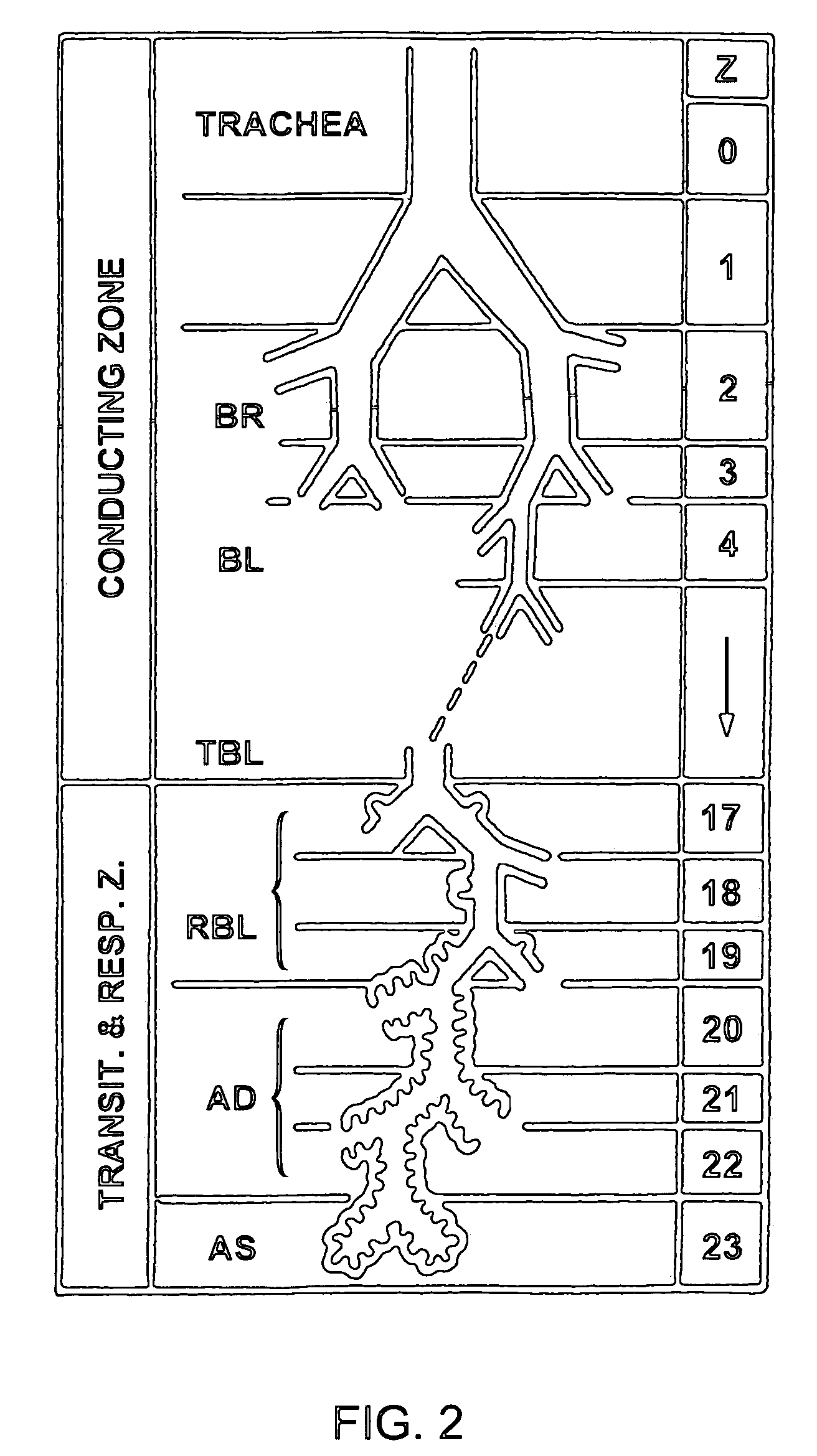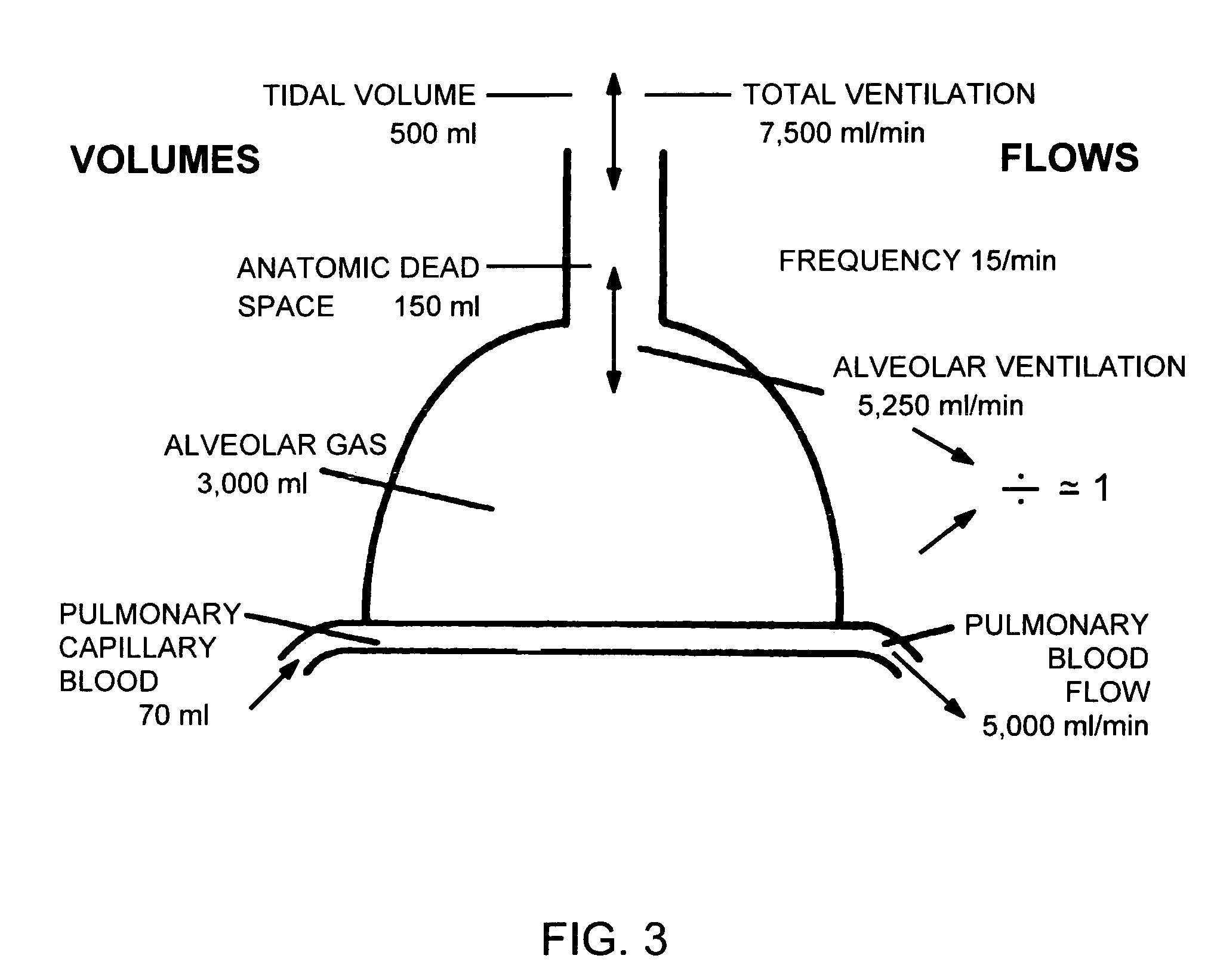Methods of delivering aerosolized polynucleotides to the respiratory tract
a technology of aerosolized polynucleotides and respiratory tract, which is applied in the directions of aerosol delivery, spray delivery, peptides, etc., can solve the problems of poor control of the site of deposition, excessive loss of inhaled drug in the oropharyngeal, and difficult delivery of various therapeutic agents to the respiratory tract. , to achieve the effect of reducing the total particle siz
- Summary
- Abstract
- Description
- Claims
- Application Information
AI Technical Summary
Benefits of technology
Problems solved by technology
Method used
Image
Examples
example 1
Formulation of the Polynucleotide
[0155]DNA was formulated with an artificial viral envelope (AVE) as the non-viral vector, using the double-dialysis method described above. The AVE formulation was modified by the addition of a cholesterol analog to the lipid membrane in order to increase the rigidity of the bilayer and provide a more stable formulation. Plasmid cDNA (total length approximately 7.5 kb) comprising β-galactosidase (β-gal) gene as a reporter under the control of CMV promoter was condensed with protamine sulfate and complexed with a negatively charged liposomal formulation (AVE) consisting of DOPE, DOPC, and cholesteryl glutarate, and a fusogen, in equimolar ratios, prepared by the double dialysis method. The resulting AVE / DNA formulation was packaged in blister packs containing a 45 μl unit dose reservoir, for use in the AERx™ (Schuster et al. (1997)) delivery system.
example 2
Stability of the AVE / DNA Within the Blister Pack
[0156]To determine the compatibility of the AVE / DNA with the AERx™ blister pack, the AVE / DNA formulation described in Example 1 was packaged and stored at 5° C. for 3 days. The size and surface charge (zeta potential) of the AVE was determined and compared to a freshly made sample which had also been packaged in the AERx™ blister material. The results are shown in Table 1.
[0157]
TABLE 1Mean DiameterZeta Potential(nm)(mV)Day 0Day 3Day 0Day 3435326+23.71+20.02
[0158]To further assess the nonreactive nature of the blister material, AVE which had been packaged within the blister for several hours or for 3 days was removed from the blister and used to perform an in vitro transfection of 293 cells. The results are shown in Table 2.
[0159]
TABLE 2% Transfection Activity in 293 CellsCompared to a Freshly Prepared AVEDay 0Day 391.7 ± 6.999.0 ± 17.1
example 3
Extrusion of the Formulation Through a Nozzle
[0160]Two AERx™ nozzle arrays, having either small (14 μm) or large (2.2 μm) holes, were tested for their effect on the integrity of naked DNA or AVE / DNA following forcible extrusion. The DNAs were also tested for their ability to clog the nozzles. Extruded samples were collected in sterilized collection tubes. The holes in the nozzle array were not blocked with either formulation. The integrity of the DNA was monitored using gel electrophoresis and ethidium bromide staining. The naked DNA remained intact after extrusion through the nozzles. The integrity of the AVE / DNA formulation could not be assessed using electrophoresis, as the formulation did not migrate in the gel, or allow ethidium staining of the condensed DNA. The integrity of the AVE / DNA formulation was measured as described in the next example.
PUM
| Property | Measurement | Unit |
|---|---|---|
| size | aaaaa | aaaaa |
| aerodynamic diameter | aaaaa | aaaaa |
| aerodynamic diameter | aaaaa | aaaaa |
Abstract
Description
Claims
Application Information
 Login to View More
Login to View More - R&D
- Intellectual Property
- Life Sciences
- Materials
- Tech Scout
- Unparalleled Data Quality
- Higher Quality Content
- 60% Fewer Hallucinations
Browse by: Latest US Patents, China's latest patents, Technical Efficacy Thesaurus, Application Domain, Technology Topic, Popular Technical Reports.
© 2025 PatSnap. All rights reserved.Legal|Privacy policy|Modern Slavery Act Transparency Statement|Sitemap|About US| Contact US: help@patsnap.com



